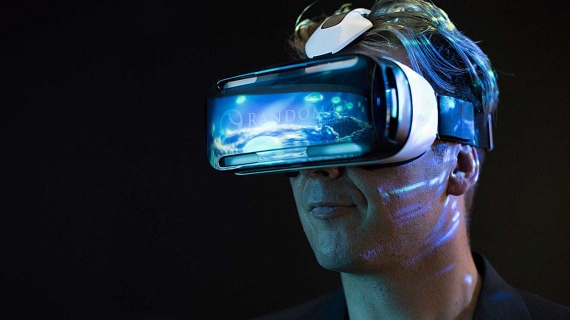
Consumers have been promised a virtual reality future for years now, and 2016 was the year that the long-held promise was finally delivered upon. But where do we go from here?
For years now, tech industry leaders have been on a mission to take virtual reality in to the mainstream, as recognised by small tech companies and non-tech companies alike, all inspired by its potential. With this in mind, will 2017 signal the demise of other media, such as television and/or books? One would sincerely hope not. But the fact remains that Virtual reality is now be considered as a mainstream entertainment media, like we always expected it to be.
Next year, experts believe that virtual reality will infiltrate almost every aspect of societal living. This is to say that it may be used as an educational tool, a law enforcement device or simply a medium for entertainment, among whatever else people imagine for it, with the potential being limitless.
Already we know of Virtual reality being used as a training method for medics and soldiers, while the latter profession has also employed the new technology as a way of helping veterans defeat Post Traumatic Stress Disorder. With regards to entertainment, a lot of excitement surrounds the future of film and television but, perhaps, the industry with the most to gain from the new development is the video games industry.
Already a booming sector of the market, video games and their industry have now surpassed the movie world in terms of money generated. It has almost every corner of life covered, from major consoles, social media apps, arcade gaming machines and the biggest sector of the market, mobile games.
To that end, headgear, specially designed for VR, is already being released. Facebook’s Oculus, Google’s Cardboard, HTC VIVE, Samsung Gear are all out there already as is Sony’s PlayStation VR, designed deliberately to work exclusively with the PS4 and further Sony releases thereafter.
Given the limitless possibilities, there is every chance of a new game genre will emerge, built upon the new technologies. True, there have been virtual reality games and simulations around for years, from various low budget solo studios, but now, after getting off to a good start in 2016, the industry as a whole seems to be getting behind the project.
Last November, Google launched the first virtual reality device, Daydream VR, that is compatible with mobile phones. It will almost certainly be successful and early figures are, indeed, encouraging and will doubtless inspire their rivals to make their next move also. The Daydream isn’t expected to be able to compete on a level with the gaming experience provided by game consoles, like the PlayStation 4 and Xbox, however, it will still be a hit that pushes the virtual tech world forward in 2017.
Games will drive the new technology on too, with tech firms constructing their devices around the needs of the games designers. Expect virtual reality tech to include extra parts of kit that extend to arms and legs. With the latter, this would completely change the way we play FIFA games or other football simulators for example. With the former, games such as Grand Theft Auto and its shooting, punching, stealing, driving narrative being driven, not by button mashing, but by acting out those physical, if distasteful, acts in “real” life and time.
There is another sector of the online, mobile and video games that won’t want to miss out on the new developments and it is casino gaming. The most popular online casinos, also in Ireland, will also need to implement the new, immersive technology. In doing so, players could virtually enter a casino, complete with people, tables and chatter, all from their own home. Again, by using a headset attachment, players will be able to walk around from table to table, and make their choice from a game of roulette, maybe some blackjack or, perhaps, play some live slots or really read opponents tells in a game of Texas Hold’em poker.
Imagine taking your place at the table, playing with your chip stack, your hand reaching out across the table, the image portrayed inside your visor, before triumphantly slamming down those cards on the river, when you reveal your winning hand. Already, that is a very exciting prospect, especially when, in reality, you are actually at home in bed.
It is potential like that this that is providing such hope that virtual technology will become gaming’s dominant platform. Industry forecasters are already predicting that Virtual reality has the potential to create more annual revenue than film and television shows over the next ten years. This is of course providing that the technology gets a piggy back from the games industry over this time period. If 2017 is to be the year that VRT goes mainstream, then it will need games to help it achieve this. Games that are only too willing to provide their full cooperation.

















